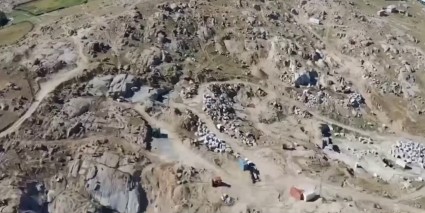In 2021 Kazakhstan produced the largest share of uranium from mines (45% of world supply), followed by Namibia (12%) and Canada (10%).
Uzbekistan is ranked fifth in this list. During the past year, 3.5 thousand tons of uranium were mined in the republic. This indicator was 3.5 thousand tons in 2020 and 2019, and 3.4 thousand tons in 2018.
Mining methods have been changing. In 1990, 55% of world production came from underground mines, but this shrunk dramatically to 1999, with 33% then. From 2000 the new Canadian mines increased it again. In situ leach (ISL, also called in situ recovery, ISR) mining has been steadily increasing its share of the total, mainly due to Kazakhstan, and in 2021 accounted for over 60% of production.
Conventional mines have a mill where the ore is crushed, ground and then leached with sulfuric acid to dissolve the uranium oxides. At the mill of a conventional mine, or the treatment plant of an ISL operation, the uranium then separated by ion exchange before being dried and packed, usually as U3O8. Some mills and ISL operations (especially in the USA) use carbonate leaching instead of sulfuric acid, depending on the orebody. Where uranium is recovered as a by-product, e.g. of copper or phosphate, the treatment process is likely to be more complex.
During the 1990s the uranium production industry was consolidated by takeovers, mergers and closures, but this has diversified again with Kazakhstan's multinational ownership structure. Over half of uranium mine production is from state-owned mining companies, some of which prioritise secure supply over market considerations.












